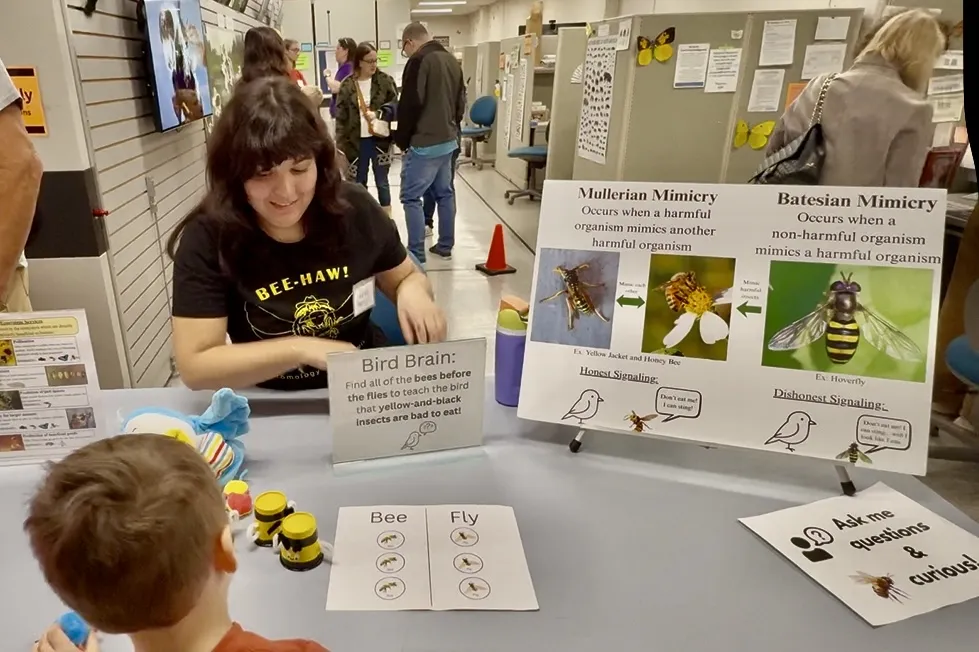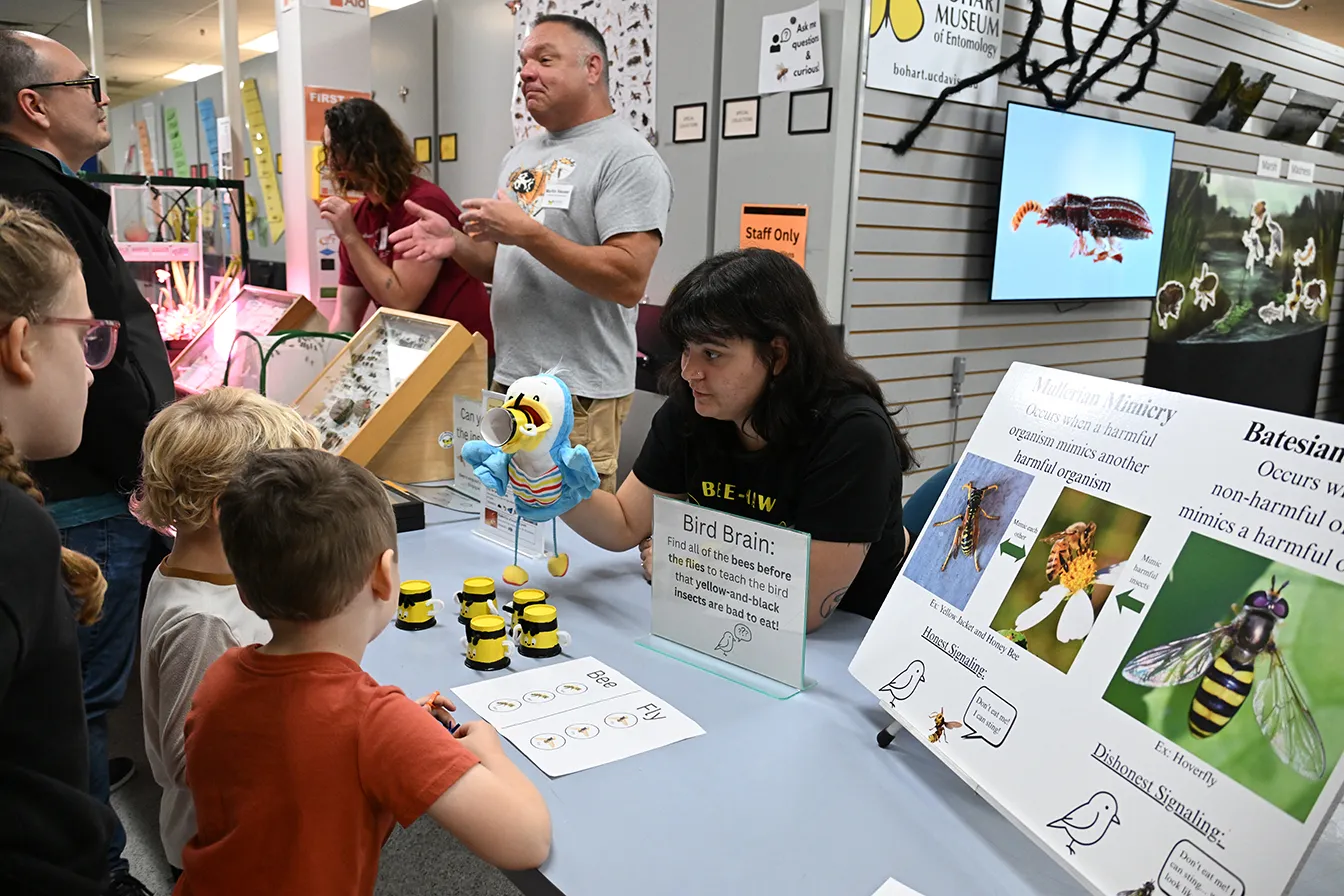
One of the innovative and riveting games at the Bohart Museum of Entomology's recent open house on "Bees and Their Mimics" was "Bird Brain," created by UC Davis doctoral candidate Alexia "Lexie" Martin, a member of the lab of community ecologist Rachel Vannette, professor and vice chair of the UC Davis Department of Entomology and Nematology (ENT).
Lexie sat a table with a bird puppet and a row of colorfully decorated cups, reminiscent of honey bees, as she played the game, engaging everyone from pre-schoolers to adults. A sign read: "Bird Brain: Find all of the bees before the flies to teach the bird that yellow and black insects are bad to eat."
Another sign briefly defined Mullerian mimicry and Batesian mimicry. "Mullerian mimicry occurs when a harmul organism mimics another harmful organism" and "Batesian mimicry occurs when a non-harmful organism mimics a harmful organism." :
"The main purpose was to teach people how predators get conditioned to associate black and yellow insects with danger," Lexie said. "In the game, there are six yellow and black insects--three are honey bees which sting--and three are hover flies which are Batesian mimics of bees, appearing yellow and black but with no stinger."
"The player has to tell the bird, the game's predator, which insect that it should eat in a game of chance, since all of the yellow and black insects look alike from the predator and player'sperspective. If they get all three bees before the flies, the predator learns that eating yellow and black insects is harmful. However, if they eat all of the hover flies first, the predator does not learn to associate yellow and black insects with danger."
Lexie and doctoral candidate Abigail "Abby" Lehner of the lab of pollination ecologist Neal Williams, ENT professor, organized the open house, which Tabatha Yang, the Bohart Museum's education and outreach coordinator, described as "very professionally done."

“They did a very professional job putting it all together, and all very creative,” Tabatha said. “They had novel ways to engage the people with their information. Some games were very fun and playful.”
(Unfortunately, Abby was unable to participate due to a “bug” she apparently caught at the Entomologial Society of America meeting in Portland, Ore. “Even though she couldn't attend, she was very much a part of it and created many of the materials,” Tabatha said.)
At the booths, attendees learned:
- How to identify bees and their mimics.
- The different types of bee mimicry.
- How to correctly identify "bee" images that news media falsely labeled.
- The ecosystem services that bees and their mimics provide.
The games or activities, in addition to Bird Brain:
- Is it a bee? Which insects are bees and which insects are mimics?
- Can it sting? Which insects can sting and which ones are "just pretending"
- Which is a bee and which is a mimic?
- Color the bees nectaring on a flower (Abby Lehner created the coloring sheet)
Lexie, president of the UC Davis Entomology Graduate Student Association and the recipient of a National Science Foundation Research Fellowship, has investigaged insect-microbial interactions in various insect species, including bumble bees, blue orchard bees, and honey wasps for the past eight years. Her overall research interests include bees, mutualism, bee-microbe interactions, bee diversity, plant-pollinator interactions, conservation, bee health. In addition, Lexie mentors students in scientific settings, and communicates science with the public through social media and outreach events. Her Instagram account is @entomolexie.
Lexie, who holds a 4.00 grade point average, is a 2021 alumna of the University of Texas, Austin, where she received--with distinction--a bachelor of science degree in biology (concentration in ecology, evolution and behavior) and a bachelor's degree of science and arts in chemistry.
The Bohart Museum of Entomology, located in Room 1124 of the Academic Surge Building, 455 Crocker Lane, UC Davis campus, houses a global collection of eight million insect specimens, plus a live petting zoo (Madagascar hissing cockroaches, stick insects,tarantulas and more) and an insect-themed gift shop. The Bohart is closed Thanksgiving week. See more on its website at https://bohart.ucdavis.edu/ or access bmuseum@ucdavis.edu.

